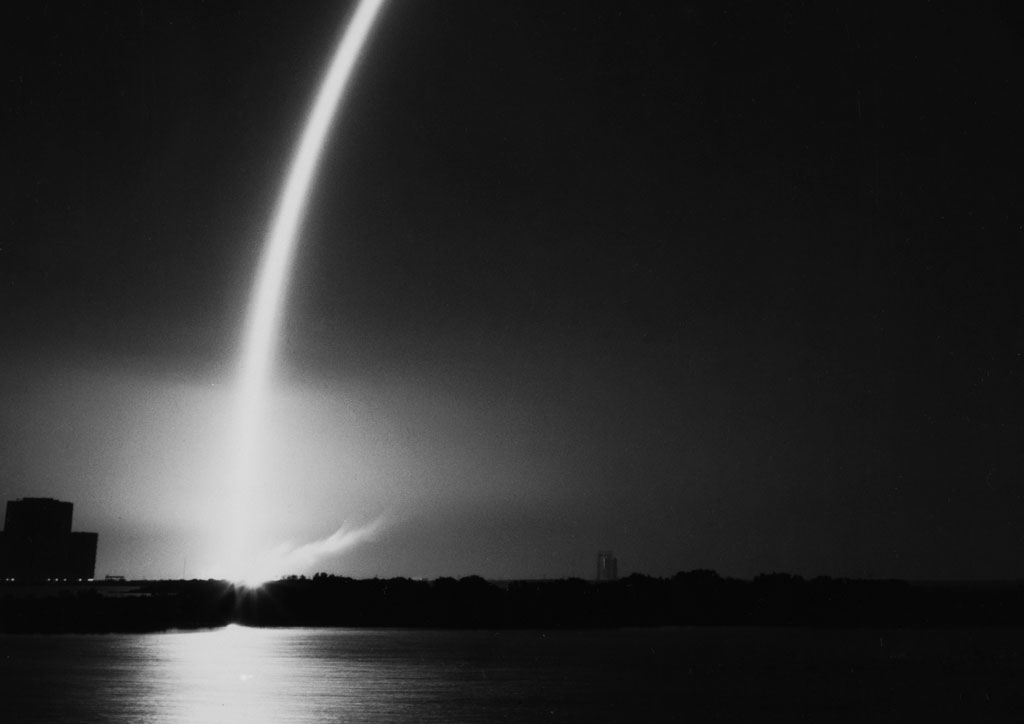
Launch of a Titan-Centaur Rocket with the Helios‒1 Spacecraft
The Titan-Centaur launch vehicle streaks across the Florida sky carrying Germany’s Helios‒1 spacecraft. The National Aeronautics and Space Administration (NASA) Lewis Research Center in Cleveland, Ohio managed the Centaur second-stage rocket and was responsible for integrating the payload with the launch vehicle and developing the correct trajectories for the mission. The Helios mission was the second attempt at launching a Centaur on the Titan booster. The first had failed earlier that year. All previous Centaur launches were performed with Atlas boosters. The Launch Vehicles Division, led by Andy Stofan, was responsible for organizing thousands of people across NASA and in private industry to accomplish the Centaur-Titan integration. NASA considered the Helios launch to be a rehearsal for the two scheduled Titan-Centaur launches carrying Viking spacecraft to Mars. Helios‒1 was the first of two German spacecraft designed to orbit the sun at closer distances than any previous spacecraft. Helios investigated the sun’s solar wind, magnetic fields, cosmic rays, and dust.
- X

























